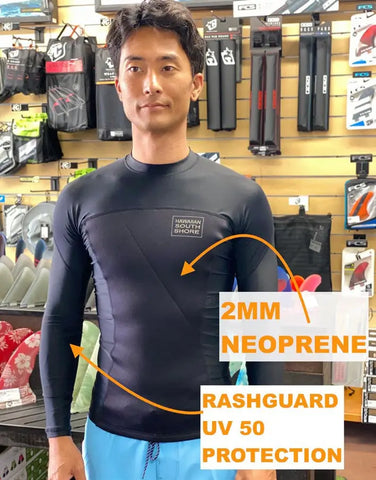Hawaiian South Shore September 2020 Newsletter
Share
NEWSLETTER SEPTEMBER 2020

Eating for Brain Health With the Mind Diet
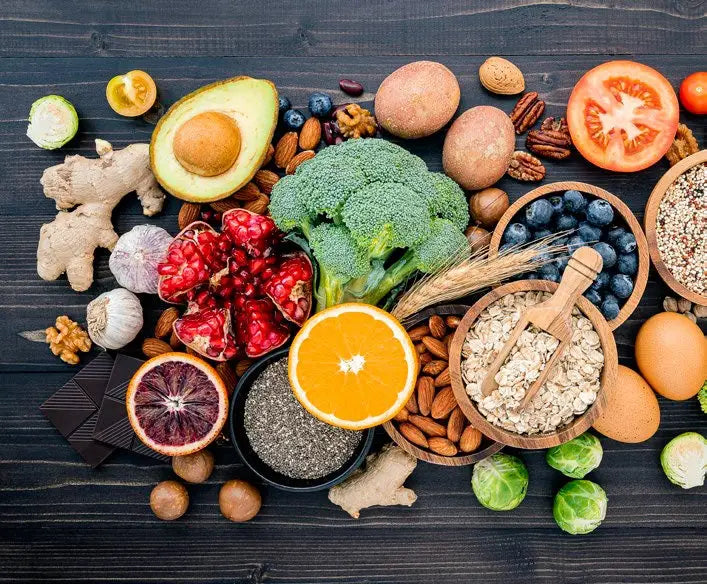
As most of you know, I spend a lot of time researching healthy diets and ways of living. As we get older, what we eat and how we spend our energy becomes more and more important—not only in terms of our weight and cardiac health, but also for mental sharpness and sleep quality.
I recently stumbled upon an article about the MIND diet, which is specifically geared at increasing cognitive function, rather than at losing weight. But the great thing about this diet is that it also helps create a healthy body. Plus, it’s not all or nothing. Even adopting part of the diet gives you some benefits. Sounds good to me!
The MIND diet stands for Mediterranean- DASH Intervention for Neurodegenerative Delay, and was created by researchers at Harvard School of Public Health and Rush University Medical Center. It is a hybrid of the Mediterranean and DASH (Dietary Approaches to Stop Hypertension) diet, and
early research indicates that it may reduce the risk of Alzheimer’s disease!
The MIND diet encourages you to eat 10 brain-healthy food groups, including fish,
berries, nuts, leafy green veggies, and other vegetables. It also limits (although not necessarily bans) unhealthy food groups such as butter and stick margarine, red meat, cheese, processed foods, and sweets. Findings from the MIND diet study were published in Alzheimer’s and Dementia: The Journal of the Alzheimer’s Association, and indicate that older adults who stuck closely to a MIND diet had a 53 percent lower incidence of Alzheimer’s, while those who followed the diet moderately had a 35 percent lower incidence.
The dietary suggestions we have discussed in previous articles align themselves closely with the MIND diet. In general, you want to avoid red meats, excessively processed carbs, sugar, dairy, and other processed foods. So what is left to eat, you might ask? Fish, veggies, fruits, quinoa, brown rice, limited amounts of whole-grain bread, berries, leafy veggies, nuts, seeds—the list is virtually endless. To make it easy, you should basically try to eat as many whole foods as possible, while avoiding meat and dairy. This is actually how most humans ate only a century ago before mass food production introduced a diet rich in highly
processed, bleached carbs.
While this dietary change might be difficult for some of us to embrace—after all, I love barbecue and white rice, with a big piece of pie from Ted’s bakery for dessert, just as much as the next guy—there’s something to be said for choosing to eat for your mind. Your brain will work better, you’ll get more sleep, and you will end up having better heart health as well. If that means missing out on dessert a few times per week, I think I can handle it.
Hawaiian South Shore Hybrid Wetsuit Top/Rash Guard
One of the most rewarding things about being involved in the surf industry is that
every now and then you have the opportunity to get your hands dirty and actually create something new and innovative. Rashguards and wetsuit tops aren’t anything new— they’ve been around for decades. But here at Hawaiian South Shore we have noticed that the different brands’ tops have all
lacked something or other over the years— none of them have all the characteristics and specifications that we need and want in a surf top. So rather than complaining, we decided we’d design our own!
Our Hawaiian South Shore surf top is a combination wetsuit top/rash guard, for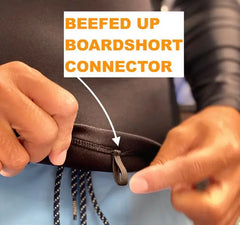 those cool mornings when you need a little extra insulation, and want to keep your session going well into the morning hours when the sun starts to heat up. A 2mm neoprene chest and back provides warmth and also padding for your chest while paddling. Meanwhile, the SPF 50 rash guard material on the arms and sides offer sun and rash protection without sacrificing flexibility as you paddle. We beefed up the boardshorts connector, which can be tied to your boardshorts string to make sure the top doesn’t ride up.
those cool mornings when you need a little extra insulation, and want to keep your session going well into the morning hours when the sun starts to heat up. A 2mm neoprene chest and back provides warmth and also padding for your chest while paddling. Meanwhile, the SPF 50 rash guard material on the arms and sides offer sun and rash protection without sacrificing flexibility as you paddle. We beefed up the boardshorts connector, which can be tied to your boardshorts string to make sure the top doesn’t ride up.
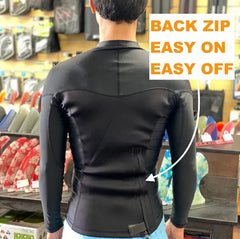 And a back zipper provides easy entry, with the zipper extending up to the middle back to increase flexibility and prevent stretching and wear of the neoprene when putting the top on. The zipper is also made with a YKK zipper specifically engineered for saltwater so that it doesn’t corrode, and is held closed with a Velcro closure.
And a back zipper provides easy entry, with the zipper extending up to the middle back to increase flexibility and prevent stretching and wear of the neoprene when putting the top on. The zipper is also made with a YKK zipper specifically engineered for saltwater so that it doesn’t corrode, and is held closed with a Velcro closure.
The top comes in sizes ranging from small to XL, and comes in sleek black neoprene, with no markings other than the name of your favorite surf shop on the chest! Come down to Hawaiian South Shore and check out this new product that we are proud to have made ourselves!
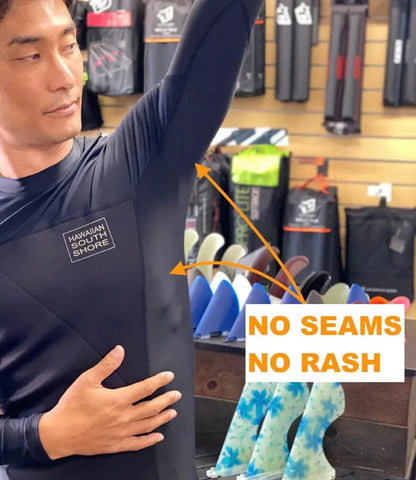
September Member of the Month Q & A with Rufus
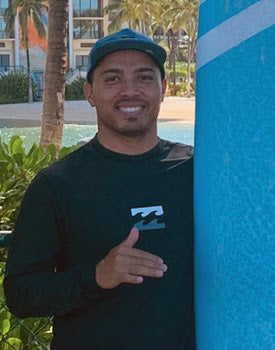
I moved to LA for college but only surfed intermittently. I took a break from surfing starting in college because I did not have a car to go to the beach at that time. After college I moved several times for work and always far away from a surf break.
When I finally moved to Hawaii, I picked up surfing right away. A lot of my friends had other activities of interest like hiking, but I knew that I had to back on the water. I had also been following lots of great loggers like CJ and Taylor Jensen on social media and I was easily persuaded to buy a board within days of getting to Hawaii.
What is your favorite thing about surfing?
Simply, just catching a wave makes me happy like nothing else. I am also really goal-oriented, so surfing gives me a lot of opportunities to improve. It’s a great feeling to try and nail a move that I saw someone else do or saw it on IG or YouTube.
I also go to the same surf spot and love seeing familiar faces. Everyone is super helpful and like-minded. I like that surfing promotes good vibes.
Where is your favorite place to eat after surfing?
Kono’s after dawn patrol – Chuns Bomber – pork and bacon bfast burritos!
Foodland Ala Moana after evening sess – ½ lb Poke and 1 scoop white rice with furikake
What other hobbies do you have besides surfing?
I am an avid painter and photographer. I really enjoy film photography.
I recently started playing guitar again as well.
What type of work do you do?
I am a military officer. I did ROTC and commissioned into the Air Force after college.
Tell us about the board you recently purchased from us. What model and size is it, and how do you like its performance?
I just got a 9’5” CJ Nelson Neo Classic shaped by Ryan Engle. I have been riding it with a 10.5 Involvement fin by Flying Diamonds. This is my new favorite board/setup for sure!
The Neo Classic is my go-to longboard now. It is really easy to paddle and seems great for all size waves in town. I am still getting used to the board, but it makes good turns and is good for walking and trimming as well. I would recommend it to anyone thinking about getting the Neo Classic.
I also ride a 9’6” CJ Sprout with a 9.5 Leeward fin by Island Fin Designs.
Do you have any additional comments?
I want to thank Hawaiian South Shore for always coming through with great recommendations and helping me to get this board. Also, thanks to CJ and Ryan for another awesome creation. We love your boards.
How to Paddle Out
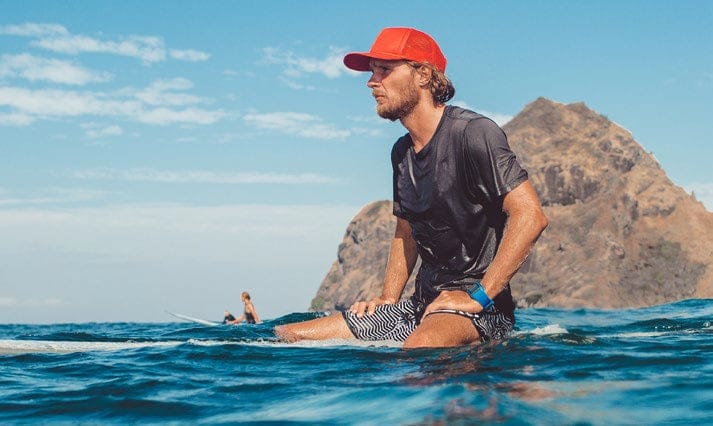
When people think of surfing, they often envision a cruisy beach scene where everyone is hanging loose, sharing waves, and getting along great. The reality, however, is that waves are scarce resources, and are often competed over fiercely—especially in crowded areas. Tempers can flare, especially when someone “steals” someone else’s wave, or gets in the way and ruins a ride. To help avoid this uncomfortable situation, it is good to understand how a wave breaks and to paddle out in the safest and most efficient way possible.
There are three basic types of waves—point breaks, beach breaks, and reefs. Point breaks are typically long and user-friendly, and for that reason, they are often quite crowded. They can also have strong currents. Many people like to paddle out near to the peak in order to cheat the current, rather than trying to paddle out from the shoulder of the wave and battling the current to the takeoff zone. However, if you are not an experienced waterman, this can get you into a bit of a pickle, especially if you end up in the impact zone and underneath of someone, ruining their ride. In general, when surfing a point break, unless you are an expert, try to paddle out from the shoulder unless the current is too strong to paddle against. Always paddle wide to avoid getting in surfers’ way, and to avoid making waves on the head.
Reef breaks differ in that they are shorter, with a more compact takeoff zone. They also often break into a channel or pass, which makes them a bit easier to paddle out to. However, they can be the most powerful type of waves, so it’s important to know your limits before you paddle out. In general, you will want to paddle out through the channel or keyhole, then slowly work your way into the lineup. It is not appropriate to paddle past the crowd that is already waiting for waves and assuming pole position in the lineup. There is typically a hierarchy in the lineup, based on experience, ability, whether or not you are a local, and how long you have been waiting for a wave. Although localisms and violence is never appropriate, it is also inappropriate to paddle straight to the front of the line. This is really no different than dropping in on someone or “snaking” them, and the fact is, if you paddle out and sit on the crowd aggressively, you very well might get snaked yourself.
When paddling in from a reef break, it is important to remember that the water being pushed over the reef by the wave has to come back out to the ocean—and it does so through the channel. That means that there will normally be a rip pulling out to sea in the channel, which is great when you are paddling out, but not so great when you are trying to paddle back to shore. The best way to get back to shore is to catch a wave or allow a wave to push you in. Many people have panicked and gotten into trouble because they didn’t want to take a big wave on the head, so they tried to paddle against the rip in the channel but found themselves sucked out to sea.
Beach breaks are similar to reefs in that they are typically shorter waves, and ideally will break into “channels.” However, beach breaks tend to be less organized, with the waves breaking in different places and the rips moving around a bit. There is also often a lot of current moving parallel to the beach in beach breaks, which can help to regulate the crowd, but also make it difficult for you to stay in position. As with reef breaks, when surfing a beach, try to find the rip or channel and paddle out there. You may find that you have to paddle for a long time and take a lot of waves on the head when paddling out—that’s par for the course when it comes to beach breaks. But by familiarizing yourself with the ocean and gaining experience, you will soon become a stronger paddler and learn to recognize rips more easily.
Paddling in from a beach break is similar to a reef in that the channels will have rips pulling out to sea. In general, you will want to get pushed into shore by a wave to end your session.
When surfing a new wave, try to watch what the locals do and learn from them. Come with a good attitude, don’t drop in on anyone or paddle past the lineup and sit deepest, and try to respect the pecking order. In time, you will work your way up the ladder yourself!
Honey - A Super Food Celebrated All Around the World
The other day I was reading an article about how a number of pro surfers are embracing a more holistic lifestyle, eliminating processed sugars from their diets, and in some cases raising their own bees to produce honey. This got me pretty interested in honey, and I decided to do a bit more research—and I was amazed by what I learned!
As it turns out, honey has been one of the most revered foods for thousands of years. It has numerous medicinal qualities, including anti-fungal and antibiotic properties. It even has natural hydrogen peroxide in it and is helpful in fighting infections. For millennia, people have been using honey in poultices to help heal cuts, and as medicine to heal other maladies and illnesses. Even today, some Band-Aid companies are still making bandages that have honey in them to help with healing!

Honey can also be used to help prevent seasonal allergies. Many people will get locally produced honey and eat a bunch of it before the allergy season kicks in, and because the honey was produced from the pollen of local flowers and plants, it can actually help make you immune to the allergens of these plants during spring and fall, when allergies are the worst.
Another benefit of honey is that it has a much lower glycemic index than processed sugars, which makes it a great substitute for sugar and artificial sweeteners. It keeps your blood sugar more stable, helps to prevent inflammation, and is less likely to lead to obesity.
Many cultures actually considered honey to be a sacred food—for all of these health reasons, and the fact that it never goes bad! They have actually found honey buried with pharaohs in Egypt thousands of years ago, and the honey was still good, even after all of those years! This really blew me away when I read about it.
I also learned that most of the honey in the US has been strained and purified, whereas much of the honey in Europe and in other countries—and the US honey that you get from farmers’ markets and beekeepers—is less processed, and often has honey crystals and even honeycomb in it. Since most of the consumers in the US are used to more purified honey, they are often confused when they see raw honey and think that there is something wrong with it, but the crystals that form are actually totally normal, and raw honey has more health benefits than the purified versions.
Ever since learning about all of these amazing facts, I have been pretty hyped on honey. It’s a great way to sweeten up food without being unhealthy, works well when baking, and can even heal infected wounds. It really is a superfood!
New Hawaiian South Shore Board Sock for Ultimate Protection

We, surfers, are often very protective of our boards—and for good reason! Not only are they a substantial financial investment, but they are also a very personal and prized possession. They each have personalities of their own, riding differently and thriving in different waves. And each board has memories associated with them—session with friends, surf trips that we took them on, and specific waves that we rode on them that we will remember forever.
For all of these reasons, it is important to treat our boards well—to wash them in fresh water after surf sessions, keep them out of the sun, and prevent them from getting dinged and beat up, as much as is possible. One of the best ways to protect boards is with a board sock. These soft, flexible board bags provide a layer of padding without adding much bulk. They are light, easy to use, simple to clean, and can help keep your board safe whether it is flying halfway across the world, driving to the beach in your car, or simply sitting on the rack at home.
Here at Hawaiian South Shore, we recently developed two new board socks that we think are really great. It is made with a sandwich construction featuring two layers of fabric with a think layer of foam in the middle, providing even more protection than the standard sock. But even with that extra protection, it has a super low profile, so a socked board can still easily fit inside of a larger board bag during international trips.
The sock comes in a light gray color, which helps to reflect sunlight on hot days, and also soaks up water pretty well, if you don’t dry your board before socking it. The fabric also dries relatively quickly, so if the sock gets wet, it won’t stay wet all week and get moldy like most cotton, twill, or knit bags.
The two layers are of material very durable and robust. It’s made from 1680D Ballistic Nylon, used on luggage, bottoms of bags, police belts, tool belts, watch straps, and motorcycle jackets. So the mesh fabric will last a long time without wearing out.
The Hawaiian South Shore Microfiber Towel
There’s nothing better than finishing an epic surf session, rinsing off in the beach
park shower, and then drying off with your favorite, comfy beach towel. There’s
something refreshing and comforting about the way a good towel soaks up the cool water, drying you off and getting you ready for the rest of your day.
But what many people don’t realize is that not every beach towel is created equal!
Some are scratchy and stiff, while others don’t actually absorb water very efficiently.
The best towels are microfiber towels, which are made from synthetic fibers that are finer than one denier or decitex per thread, with a diameter of under 10 micrometers. If that sounds confusing, what it means is that the fibers the towel is woven from are thinner than a strand of silk, or one-fifth the thickness of a strand of hair!
The benefit of such a thing “microfibers” is that they are both soft and super-absorbent. For centuries, towels made in this way have been prized for their comfort, efficacy, and luxurious feel. But these days, you don’t have to part of the royal family to be able to enjoy microfiber towels. They are affordable and widely available—and Hawaiian SouthShore now has them in stock with our most popular HSS design! These towels pretty large at 60 by 31 inches, making
them perfect for hitting the beach, and the microfibers they are made from guarantee they are soft and comfy, absorb water easily, and dry super fast. Best of all, they have our classic fish surfboard design on them, to keep you stoked all summer, and into the winter! More wisdom and positivity.
MORE TO READ...

